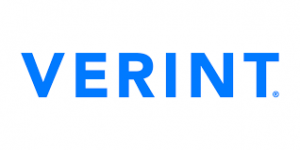As the saying goes, government is often “doing more with less.” But has there ever been a time such as now when that reality is tested to such extremes?
The Brookings Institution projects that this year state and local government revenue will decline by $155 billion and in 2021 by $167 billion. “State and local government are expected to face shortfalls for many years,” Brookings says.
Agencies need to figure out ways to not just close budget gaps but also raise new revenue streams. To do so, they must prioritize services based on need, not want, said David Moody, Vice President and General Manager of the Engagement Management Professional at Verint, a customer engagement solutions provider.
Government is going to have to rethink what services they can actually offer and what can be ceased.
“You may think this is quite radical, but we’re already seeing this discussed openly by some of our government clients across the world, because they simply can’t continue to work as before – and the public understands that,” Moody said.
1. More self-service
One of the options agencies can consider is increased self-service. If an agency can move interactions online as self-service, it can use fewer human resources and have more flexibility around cost. And, it can be more convenient for the customer as well.
Self-service can also be a way to capture new revenue. If customers want to access a certain service the “old-fashioned way,” they can pay for it. It’s what happens in the commercial sector with organizations such as banks – you can receive your monthly statement online for free, but if you want it mailed, you pay a fee.
Of course, agencies may likely face pushback if they introduce a new charge for an existing service. But Moody says that if an agency is considering this, there’s no better time than now.
“People will more likely understand why you’re doing it,” Moody said, given the financial circumstances that state and local agencies are in. If you can clearly explain why, constituents will more likely be receptive now versus later.
2. Subscription-based cloud
Another technology that agencies can leverage for their financial benefit is cloud software delivery. Cloud offers subscription-based consumption, which means agencies can adjust usage to fit their operating budget needs.
For example, Verint worked with one Australian nonprofit that needed to add a service technology quickly within a tight budget constraint. The nonprofit, a 24-hour crisis support and suicide prevention service, needed a way to automate its volunteer onboarding process and increase its intake. Within six weeks, the capability was implemented within budget through the help of cloud deployment.
“COVID-19 is likely to dominate strategy into 2021 and beyond. But I do think government customer service will ultimately be better,” Moody said. “I think there’s lasting change that will come out of this.”
This article is an excerpt from GovLoop’s recent guide, “Resilience Lessons From State & Local Government.” Download the full guide here.





Leave a Reply
You must be logged in to post a comment.